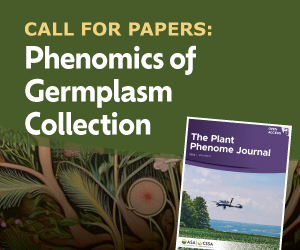Breeding for Carbon Storage
While breeding for yield has brought with it some carbon-storage benefits, plant and soil scientists see much more potential below ground.
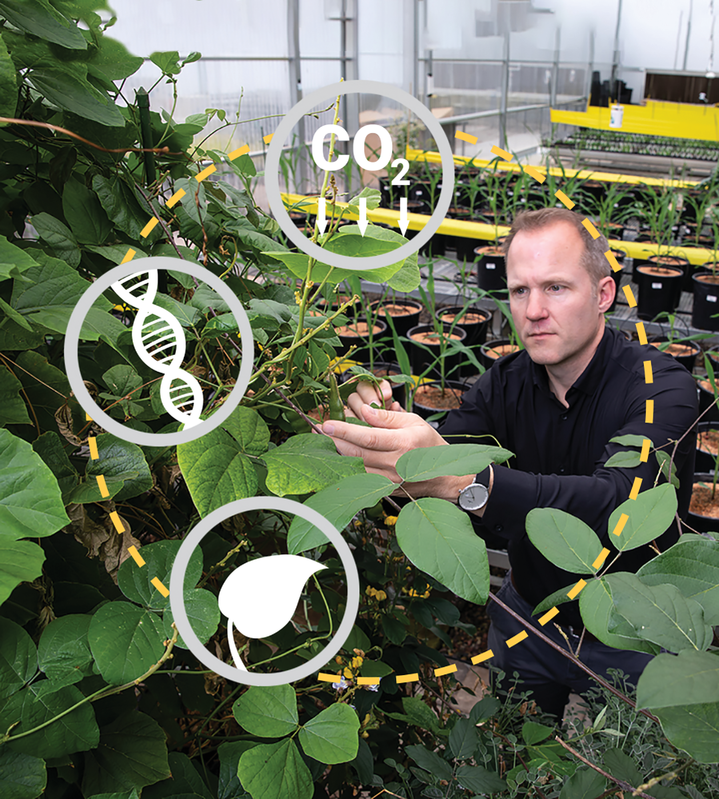
Farmers, scientists, and policymakers are becoming increasingly aware of how critical soils will be in our struggle to cope with climate change. That includes agricultural lands where they have focused on management practices such as cover crops and no-till to help store carbon. But with more powerful tools like artificial intelligence at their disposal, scientists are paying more attention to breeding crops to sequester more carbon, especially via the roots. The strategy promises to be far more effective at trapping carbon in the long term than management.
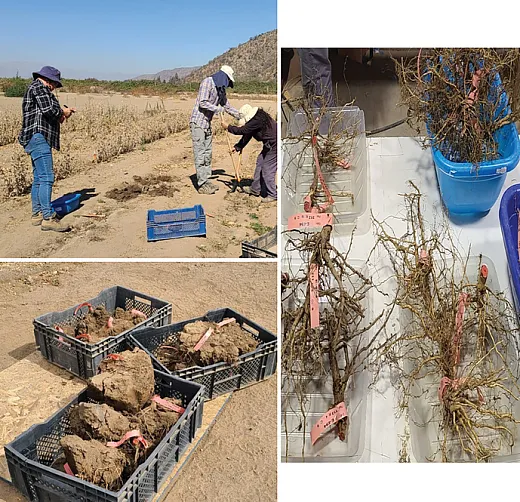
Climate change is a sobering issue. Even so, when you start discussing it with Wolfgang Busch, executive director of the Harnessing Plants Initiative (HPI) at the Salk Institute for Biological Studies, he gets surprisingly deep, surprisingly fast. Partly this is because, as a plant geneticist and root biologist, his research takes him deep underground. It’s also because he delves deep into details, like the structure and chemistry of plant macromolecules and the mind-boggling complexity of crop genomes.
But most strikingly, it’s because he’s deeply passionate about using breeding to turn all those crops covering 10% of the planet into so many lean, green carbon-trapping machines. “As long as we have the right breeding targets or engineering targets,” Busch argues, “... just the massive scale of agriculture on this planet promises a huge, tremendous impact.”
Busch’s own targets are a bit hard to scope out: They are underground in plant root systems. But it’s well worth probing that belowground biomass because it has special carbon-storing potential for reasons we’ll dig into shortly. That potential has attracted significant attention, funding, and talent. The Audacious Project (affiliated with the TED organization) and the Bezos Earth Fund have both funneled tens of millions of dollars into HPI, allowing Busch to hire more than 80 experts and collaborate with dozens of partners.

One of them is the University of Kentucky’s Hanna Poffenbarger, who brings her expertise as a soil scientist to HPI’s field experiments. The more she learned about roots, the more excited she became about breeding crops for carbon (C) storage in general, resulting in a recent review paper in Crop Science (https://doi.org/10.1002/csc2.20920).
“A lot of the research for soil organic matter has been on tillage and cover cropping, crop rotations,” says Poffenbarger, lead author on the paper and a member of all three Societies. “I just wanted to explore it from the side of the roots but then expanded it because we realized that ... there are other plant traits as well that could impact soil.”
Poffenbarger and her coauthors identified three ways plant breeding contributes to soil C storage: enhancing cropping systems to maximize plant C fixation during fallow periods; increasing residue production of crops; and finding ways to protect plant C from microbes.
We’ll touch on all of these below before circling back to Busch and his roots. But first, let’s take a minute to look at how we ended up in our current predicament.
Where Has All the Carbon Gone?
Soils are critical for C storage; planet-wide, they contain almost twice as much as living flora and the atmosphere combined, according to data from NASA and the Intergovernmental Panel on Climate Change. But we humans have been releasing soil carbon ever since we left our hunting-gathering ways behind some 12,000 years ago. Centuries of converting more carbon-rich land to farming took a huge toll on soil, resulting in an estimated loss of 133 petagrams of carbon (a petagram is a trillion kilograms).
Today, different kinds of soil contain different amounts of carbon. Wetlands are the undisputed carbon king, stockpiling an average 643 metric tons per hectare. Croplands rank low on the list, storing an eighth as much; only deserts and semi-deserts stow less. Chalk this up to the very nature of farming: We reap much of the biomass we grow, diverting carbon from soil to stomachs. Also, some of our farming practices contribute to erosion and carbon loss from soil. For example, “It may involve installation of artificial drainage systems that will aerate the soil and increase that loss of carbon as carbon dioxide,” Poffenbarger says.
But in the face of climate change, more researchers and growers are pursuing “sustainable intensification,” seeking to eek as much food as possible out of each hectare while conserving soil and other resources. That includes leveraging the soil’s carbon-storing powers.

One approach: cropping systems that either decrease carbon dioxide release—decreasing tillage and reflooding drained croplands, for example—or leave more biomass on the soil, like planting cover crops and choosing crop rotations that result in more post-harvest field residue. Following such a switch in practice, carbon inputs to the soil exceed outputs. But there’s a point at which the benefit reaches its full potential; then the rate of C sequestration will decline.
That’s why she’s more excited about breeding plants for better carbon storage, which can pay higher dividends over time. “Breeding holds more potential in the long run than implementing management practice,” Poffenbarger says, “as long as the plant breeders are continually working on improving the traits.”
Breeding for Yield: The Trait that Keeps on Giving
In fact, plant breeders have been boosting crops’ contributions to carbon storage for decades. But those were mostly incidental improvements that piggybacked on other targets.
The major target for crop breeders has always been yield, and their success has been astounding. Yields for wheat and maize, for example, roughly doubled between 1961 and 2020 globally. That generation of breeders gave little if any thought to carbon storage.
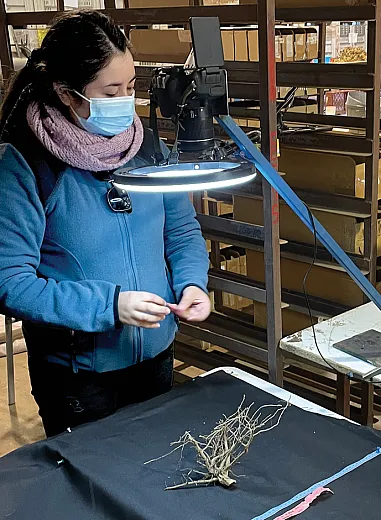
Nonetheless, their high-yielding crops often generated more post-harvest residue; this happens in corn, soybean, and many other crops, as Poffenbarger noted in the Crop Science review. Depending on factors such as how quickly that residue degrades, its carbon can hole up in the soil for months, years, or even decades.
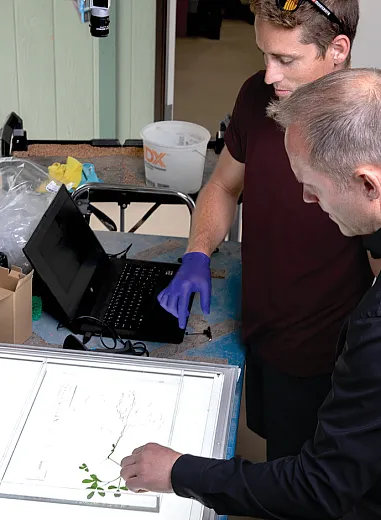
Higher yields don’t always translate into more residue. In wheat, for example, breeding brought more grain production but not a larger overall plant. But with many crop cultivars, carbon storage has ridden in on yield’s coattails, a manifestation of the wry adage, “You get what you select for—but you don’t know what you’re selecting for until you get it.”
Plant breeder and CSSA member Charlie Messina, who worked for the private sector for 17 years before joining the University of Florida faculty last year, knows the phrase—and the phenomenon—quite well from personal experience.
Traditionally, Messina explains, breeders targeting yield home in on maximizing the trait under normal conditions, hoping the improved performance will extend to less favorable conditions. But for AQUAmax, a set of corn hybrids he helped develop at Corteva Agriscience, the approach was different. The team aimed for a cultivar that would produce well in drought while maintaining high yield under good conditions—a more complex challenge, Messina explains. They ended up, he said, with “a clever plant” that uses water conservatively early in the season and takes up more later when water is critical for production. “It's how the plant is using that water,” Messina says. “It’s very adaptive to the patterns of rain.”
The bred-for traits came with some carbon-trapping perks. Drought-tolerant plants make cover crops more feasible. And better yields—AQUAmax allows for 20 to 30% more plants per square meter—left more residue on the field to fix more carbon. A “clever” plant might also grow longer, fixing more carbon over time. “Essentially, the genetics enabled the intensification of the agronomic management,” Messina said. “Those two things go hand in hand.”
The links between practices and breeding are critical, Messina stressed. For example, some farmers who planted AQUAmax described lower yields. But as Messina reported last year in Crop Science (https://doi.org/10.1002/csc2.20781), the hybrid performs as promised when managed as recommended by agronomists and extensionists. It could be, he hypothesized, that the farmers reporting lower yields balked at planting them as densely as recommended.
”You need to get the right genotypes with the right management for the right environment,” Messina says. “If you miss that combination, you're not going to get the full value of the resources.” Yield isn’t the only plant-level tweak that can help plants store carbon. Traits like higher leaf nitrogen concentrations or more upright leaf angle can help plants use light more efficiently and, by extension, leave more residue behind for the soil. “There's a lot of different traits in the plant that could impact that,” Poffenbarger notes. “And that's where it's been challenging: To see, if you change one thing, how it impacts the overall biomass production in the field.”
Rooting for Roots
While conventional breeding for yield has helped many crops bulk up on aboveground biomass, it has not, Poffenbarger found in her review, enhanced the traits that would trap it underground longer—at least for corn, soybean, and wheat. But given the genetic variation in these traits, that dark world where plant-derived carbon stabilizes into soil organic carbon is a promising place to look for carbon storage solutions.
In fact, root inputs punch well above their weight. As Poffenbarger explains in her paper, roots of corn, soybean, and wheat contribute just 40 to 60% of the carbon that the aboveground residue contributes to soil. But they contribute more soil C than shoot inputs because they are more efficiently transformed into stable soil organic C (more on that shortly). Breeding could boost that capacity even more. Referencing the work of SSSA Fellow Keith Paustian from Colorado State University, Poffenbarger says roots bred for greater depth and biomass could boost carbon storage by an estimated one metric ton of carbon dioxide equivalent per hectare per year.
It’s all about the long game: Carbon from roots remains in soil more than twice as long as shoot carbon, Poffenbarger notes. Soil scientists call this residence time. If shoot carbon is the short-term subletter of this underground world, root carbon is the ensconced homeowner. Tucked away in its subterranean suites, root carbon can better evade the microbes that would break it down and allow most to escape back into the atmosphere. Real estate for root C is all about location, location, location—or, as soil scientists would put it, placement, placement, placement. The deeper the soil, the less oxygen there is, the fewer microbes there are, and the more likely root C will evade microbially mediated eviction.
“Fine roots, root hairs, and mycorrhizae can become wedged in teeny, tiny pores between the soil, so that makes it harder for the microbes to decompose them.”
Root carbon excels at this game of hide-and-seek because it’s more likely than shoot C to bind to mineral surfaces and find hidey holes in soil aggregates’ nooks and crannies.
“Fine roots, root hairs, and mycorrhizae can become wedged in teeny, tiny pores between the soil,” Poffenbarger explains, “so that makes it harder for the microbes to decompose them.” The deepe the root C, the more profound (no pun intended) these effects.
By now you’ve gotten the picture: Root trumps shoot when it comes to storing carbon. But why? While root mass and depth are key, It also comes down, plant biologists believe, to a special root super power—or perhaps we should say, suber power.
What’s So Super About Suberin?
All vascular plants contain the compound suberin, mostly underground. Typically found in specialized cell walls, it serves as a hydrophobic barrier—as in cork, for example (suber is Latin for cork). Even more than other plant polymers like cellulose and lignin, this macromolecule resists decomposition due to its huge size, complex structure, resistance to water, and recalcitrant long-chain fatty acids.

“The longer the chains are, the more solid and the more robust they get,” explains HPI’s Busch. “And suberin has a number of these chains arranged in a specific fashion and then crosslinked at the end. So it's a very big molecule that is very stable and doesn't let a lot of things through.”
Unfortunately, suberin-related traits don’t appear to incidentally improve with conventional breeding targets. So HPI is targeting suberin, along with deeper and more massive roots, for breeding crops that store more carbon. One strategy is to identify and manipulate genes associated with suberin synthesis to get plants to produce more cells with suberin and more suberin per gram of root tissue, in the parts of the plant where it naturally occurs. But suberin quality is just as important as suberin quantity: HPI is trying to get crops to produce suberin that is more resistant to
decomposition. “Different plants seem to produce slightly different suberin,” Busch says. “For instance, the chain length of these long-chain fatty acids might be different—at least our data indicate that.” Wetland plants produce particularly tough suberin, Busch says; a team led by Salk’s Joseph Noel is studying exactly how that happens in the hopes of transferring that trait to other plants.
Crops with more roots that go deeper and contain more suberin: That’s Busch’s carbon-capturing vision. To get there, he and his team are identifying genes associated with these traits in the model plant Arabidopsis thaliana and then trying to identify and optimize those genes in crops.
For example, since finding a gene in Arabidopsis that increases root depth up to 100% when it’s made more active, they’ve been working on translating it to soybean and canola. To
date, Busch says his group has identified more than 30 genes or gene combinations associated with their sought-after root traits. They are making crop lines with altered versions of these genes, testing them in greenhouses and, eventually, in the field with partners like Poffenbarger.
It’s a daunting, gene-in-a-haystack challenge, given the thousands of crop varieties and hundreds of thousands of genes in play. It takes a lot of work and time to advance a change from gene to cell to organ and then usher that organ from lab, to greenhouse, to field. Not to mention how hard it is to measure complex underground structures. But generous funding has provided Busch and his HPI team access to cutting-edge machine learning, imaging techniques, genome sequencing, and single-cell transcriptomics. The latter method isolates single cells from roots to reveal the activity of each of the 30,000-some genes.
“That is part of why we're making a lot of progress,” Busch says. “Our ability to measure roots at a large throughput, to analyze the data, and to know what's going on inside of the cells of these roots.”
Obstacles and Aspirations
Still, all the new knowledge and plant registrations will only matter if farmers leverage them, which concerns both Poffenbarger and Messina. Producers might not want to pay for costlier seeds, Poffenbarger worries, and farmers may not manage them optimally. “We can have the best combination of genes,” Messina notes, “but if the farmer doesn't grow it, society gets nothing.”
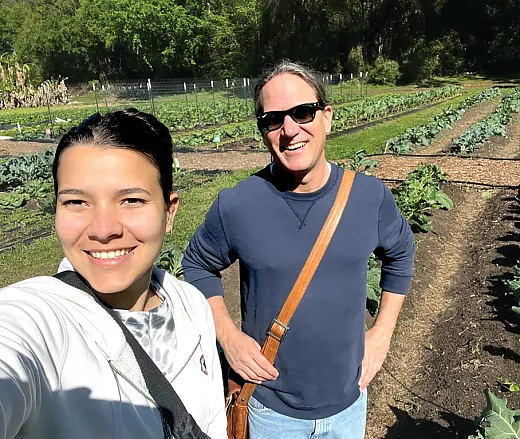
In the end, though, Poffenbarger completed her Crop Science review encouraged about breeding’s potential for carbon storage. “Looking back at the progress that plant breeders have made in increasing yields definitely made me feel optimistic about the power of plant breeding,” she says. “If we turn that energy and expertise towards some other services— whether that's soil carbon sequestration or something else—there is a lot of potential there.” As breeders turn their attention to crops for carbon storage, Poffenbarger asks that they not overlook cover crops: Some of their traits, if improved, could make them fit better into existing cropping systems, leading to wider adoption and more C sequestration. Messina recently shifted his attention to traits related to higher nutrition, long considered less critical than yield or calories. “The post-World War II breeding system was extremely effective at solving the problem of production of calories to fight hunger,” Messina says.
“But it also created the conditions that led to obesity and other diseases.” Messina recently launched a broccoli breeding program in partnership with the Harvard University-led Brain Health Initiative and Massachusetts General Hospital. He hopes to boost the vegetable’s nutritional profile and to eventually do the same for strawberries and blueberries. “The same breeding machinery that took us to increased yields, we can redirect that,” Messina says. “We showed we can improve drought tolerance, we can improve nitrogen efficiency—we can do whatever with that machinery. It is up to humans.”
Busch is calling more of us humans to get involved in this work. We could start by reading Poffenbarger’s Crop Science paper. “This is the first review that lines up everything ... what people already have studied in the relevant agricultural crops,” he says. “We need more people to read this and to think along these lines and fill in the gaps ... We need everyone to think about this.”
Dig Deeper
To find out more about the research highlighted in this story, please see:
- “Sustained Improvement in tolerance to Water Deficit Accompanies Maize Yield Increase in Temperate Environments,” published in Crop Science: https://doi.org/10.1002/csc2.20781
- “Contributions of Plant Breeding to Soil Carbon Storage: Retrospect and Prospects,” published in Crop Science: https://doi.org/10.1002/csc2.20920
To learn more about the Harnessing Plants Initiative, visit salk.edu/harnessing-plants-initiative.
Text © . The authors. CC BY-NC-ND 4.0. Except where otherwise noted, images are subject to copyright. Any reuse without express permission from the copyright owner is prohibited.








